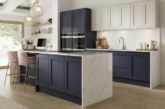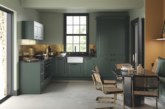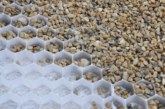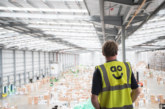Tim Wright, Managing Director, Concrete Products at Ibstock Concrete, which includes the market leading Forticrete and Supreme product brands, discusses the biggest challenges of 2020 and what opportunities are in store for the industry throughout 2021.
How did Forticrete adapt to the onset of the pandemic? Did the company have to change its plans?
I think it’s safe to say that the last 12 months have been extremely difficult for the industry.
Initially, like all manufacturers, we ceased production last March and furloughed 80% of our workforce in line with Government restrictions. We worked extremely hard to restart manufacturing once it was safe to do so, with the wellbeing of our employees, suppliers and customers our first priority.
As part of this, we implemented stringent Covid-safe working practices across each of our manufacturing sites, with our experienced team of engineers working around the clock to meet tough market demands created by a backlog in orders and increased demand. This included the application of tactical shift pattern changes throughout the factories, which optimise every single hour to increase manufacturing output in the safest way.
Are you anticipating a strong year ahead for roofing tiles?
The government has already indicated that the housing sector is a key element of its recovery strategy, so there are reasons for optimism with regard to roof tiles in this area of the market.
That said, there are also a number of factors that are generating a level of uncertainty throughout the industry. This includes the impact of the recent Brexit deal, combined with the end of the Stamp Duty Holiday on the 31st March and the upcoming closure of the government’s current Help to Buy Scheme.
However, the government’s confirmation of its Affordable Homes Programme from April is a positive incentive that will boost consumer confidence and support the continued and sustained growth of the housing market. As a result of this, we are currently in a position of cautious optimism for how the market will perform throughout 2021.
However, we are well placed to support the UK housebuilding industry and are working closely with our key customers to deliver an assured supply of roofing products when they require them for current and future developments.
Will the events of 2020 have any lasting effect on the roofing industry?
The one positive I think the construction industry will take from the last 12 months is that a new trading environment has been created, one that encourages and supports closer collaboration between all parties.
Collectively as an industry, a significant proportion of manufacturers have reviewed their operational procedures and processes to adapt to the new climate, which has ultimately led to the sector becoming more efficient and productive. I believe a number of these new ways of working will continue to be embedded and help the industry to gain ground for a number of years to come.
Ibstock Concrete has taken significant key learnings from the challenges we experienced in 2020 and have made strategic updates that will ensure the right levels of capacity flexibility to deliver assured supply across all product ranges.
Modern tiled roofs are a blend of traditional aesthetic and modern technology. What will the next step in roof tiles be?
The importance of aesthetics continues to be a key driver for the industry, as clients increasingly require new materials that offer an enhanced or unique visual appeal, without compromising on quality, longevity or performance.
As technology continues to advance, the ability to create a tile that replicates a natural aesthetic at a lower cost, combined with enhanced installation efficiencies, is paving the way for a new generation of concrete roof tiles.
Product innovation has been at the very centre of Ibstock Concrete’s ethos for over five decades. The development of our large format SL8 roof tile is a prime example of this, with the creation of its thin leading edge fulfilling a key requirement that the market required at that time. Today, our SL8 and PAN8 roof tiles offer superior coverage benefits, requiring just eight tiles per square metre. This not only improves installation methods, but also enhances the overall visual effect.









